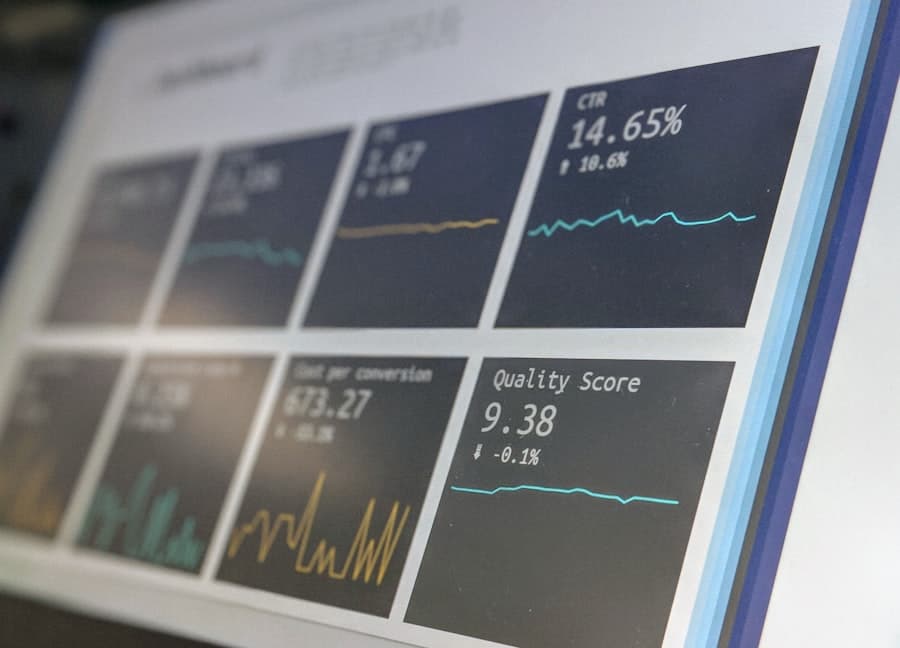The insurance industry has long been characterized by its reliance on traditional methods of risk assessment and underwriting. However, the advent of technology has ushered in a new era, with Artificial Intelligence (AI) at the forefront of this transformation. AI-powered InsurTech represents a significant shift in how insurance companies evaluate risk, process claims, and engage with customers.
By leveraging vast amounts of data and advanced algorithms, these technologies enable insurers to make more informed decisions, streamline operations, and enhance customer experiences. AI’s integration into the insurance sector is not merely a trend; it is a fundamental change that promises to redefine the landscape of risk management. InsurTech firms are harnessing machine learning, natural language processing, and predictive analytics to create innovative solutions that address the complexities of modern insurance.
This evolution is particularly crucial in an era where consumer expectations are rapidly changing, and the demand for personalized, efficient services is at an all-time high. As we delve deeper into the role of AI in risk assessment, it becomes evident that this technology is not just an enhancement but a necessity for insurers aiming to remain competitive.
Key Takeaways
- AI-Powered InsurTech is revolutionizing the insurance industry by leveraging artificial intelligence to optimize risk assessments and improve decision-making processes.
- AI plays a crucial role in risk assessment by analyzing vast amounts of data to identify patterns, trends, and potential risks, leading to more accurate and efficient risk evaluations.
- The advantages of AI-Powered InsurTech in risk assessment include enhanced accuracy, speed, and scalability, leading to better risk management and cost savings for insurance companies.
- Despite its benefits, AI in risk assessment also presents challenges and limitations, such as data privacy concerns, algorithm biases, and the need for human oversight to ensure ethical and fair decision-making.
- Ethical and regulatory considerations are essential in AI-Powered InsurTech to ensure transparency, accountability, and compliance with industry standards and regulations, ultimately building trust with customers and stakeholders.
The Role of AI in Risk Assessment
AI plays a pivotal role in transforming risk assessment processes within the insurance industry. Traditionally, risk assessment relied heavily on historical data and actuarial science, which often resulted in a one-size-fits-all approach. However, AI introduces a more nuanced methodology by analyzing real-time data from diverse sources, including social media, IoT devices, and telematics.
This capability allows insurers to gain a comprehensive understanding of individual risk profiles, leading to more accurate underwriting decisions. For instance, in auto insurance, telematics devices can monitor driving behavior in real-time, providing insurers with insights into factors such as speed, braking patterns, and even weather conditions. By analyzing this data through AI algorithms, insurers can assess the risk associated with a particular driver more accurately than ever before.
This not only enhances the precision of risk assessments but also enables insurers to offer personalized premiums based on actual driving behavior rather than generalized statistics. Consequently, AI facilitates a shift from reactive to proactive risk management, allowing insurers to identify potential risks before they materialize.
Advantages of AI-Powered InsurTech in Optimizing Risk Assessments

The advantages of AI-powered InsurTech in optimizing risk assessments are manifold. One of the most significant benefits is the ability to process vast amounts of data quickly and efficiently. Traditional methods often involve labor-intensive processes that can take weeks or even months to yield results.
In contrast, AI algorithms can analyze large datasets in real-time, providing insurers with immediate insights that inform decision-making. This speed not only enhances operational efficiency but also allows insurers to respond swiftly to market changes and emerging risks. Moreover, AI enhances the accuracy of risk assessments by minimizing human error and bias.
Human underwriters may inadvertently allow personal biases to influence their decisions, leading to inconsistencies in risk evaluation. AI systems, on the other hand, rely on data-driven insights devoid of emotional influences. By utilizing machine learning models that continuously learn from new data inputs, insurers can refine their risk assessment processes over time.
This iterative learning process ensures that assessments remain relevant and accurate as market conditions evolve. Another advantage lies in the predictive capabilities of AI. By employing advanced analytics and machine learning techniques, insurers can forecast potential risks and trends with remarkable precision.
For example, predictive modeling can help identify emerging risks related to climate change or shifts in consumer behavior. This foresight enables insurers to adjust their policies proactively and develop products that cater to evolving market demands. As a result, AI-powered InsurTech not only optimizes current risk assessments but also positions insurers to anticipate future challenges effectively.
Challenges and Limitations of AI in Risk Assessment
Despite its numerous advantages, the integration of AI into risk assessment processes is not without challenges and limitations. One significant concern is the quality and availability of data. AI systems rely heavily on high-quality data for training algorithms and generating accurate predictions.
In many cases, insurers may encounter incomplete or biased datasets that can lead to flawed assessments. For instance, if an insurer primarily uses historical data from a specific demographic group, it may inadvertently perpetuate existing biases in its risk evaluations. Additionally, the complexity of AI algorithms can pose challenges in terms of transparency and interpretability.
Many machine learning models operate as “black boxes,” making it difficult for underwriters and stakeholders to understand how decisions are made. This lack of transparency can lead to mistrust among consumers and regulatory bodies alike. Insurers must navigate the delicate balance between leveraging advanced technologies and ensuring that their processes remain understandable and accountable.
Furthermore, regulatory compliance presents another hurdle for AI-powered InsurTech. The insurance industry is subject to stringent regulations designed to protect consumers and ensure fair practices. As AI technologies evolve rapidly, regulators may struggle to keep pace with these advancements.
Insurers must remain vigilant in adhering to existing regulations while also advocating for frameworks that accommodate innovative technologies without stifling progress.
Ethical and Regulatory Considerations in AI-Powered InsurTech
The ethical implications of AI in InsurTech are profound and multifaceted. One primary concern revolves around data privacy and security. As insurers collect vast amounts of personal information to inform their risk assessments, they must prioritize safeguarding this data against breaches and misuse.
Consumers are increasingly aware of their digital footprints and expect transparency regarding how their data is used. Insurers must establish robust data governance frameworks that not only comply with regulations but also foster trust among policyholders. Moreover, the potential for algorithmic bias raises ethical questions about fairness in risk assessment processes.
If AI systems are trained on biased datasets or lack diversity in their input data, they may inadvertently discriminate against certain groups or individuals. This could lead to unfair pricing practices or denial of coverage based on factors unrelated to actual risk. Insurers must actively work to identify and mitigate biases within their algorithms while promoting inclusivity in their data collection practices.
Regulatory considerations also play a crucial role in shaping the landscape of AI-powered InsurTech. As governments grapple with the implications of AI technologies across various sectors, they are increasingly focused on establishing guidelines that ensure ethical use while fostering innovation. Insurers must stay informed about evolving regulations related to AI and adapt their practices accordingly.
Engaging with regulators proactively can help shape policies that balance innovation with consumer protection.
The Future of AI-Powered InsurTech in the Insurance Industry

The future of AI-powered InsurTech holds immense promise for the insurance industry as it continues to evolve and adapt to changing market dynamics. One key trend is the increasing integration of AI with other emerging technologies such as blockchain and the Internet of Things (IoT). For instance, blockchain can enhance data security and transparency in transactions while IoT devices provide real-time data for more accurate risk assessments.
Additionally, as consumer expectations continue to shift towards personalized experiences, AI will play a critical role in enabling insurers to deliver customized solutions. By harnessing advanced analytics and machine learning algorithms, insurers can create tailored policies that reflect individual preferences and behaviors.
This level of personalization not only enhances customer satisfaction but also fosters loyalty as consumers feel valued and understood by their insurers. Furthermore, as the insurance landscape becomes increasingly competitive, companies that embrace AI-powered InsurTech will have a distinct advantage over those that cling to traditional methods. The ability to leverage data-driven insights for proactive risk management will be essential for insurers seeking to differentiate themselves in a crowded marketplace.
As such, investment in AI technologies will likely become a strategic imperative for insurers aiming to thrive in the future.
Case Studies of Successful Implementation of AI-Powered InsurTech
Several case studies illustrate the successful implementation of AI-powered InsurTech within the insurance industry, showcasing how these technologies can drive innovation and improve risk assessment processes. One notable example is Lemonade, a digital insurance company that leverages AI algorithms for underwriting and claims processing. By utilizing chatbots powered by natural language processing, Lemonade streamlines customer interactions while employing machine learning models to assess risks based on real-time data inputs.
Lemonade’s approach has resulted in faster claims processing times and improved customer satisfaction rates compared to traditional insurers. The company’s use of AI not only enhances operational efficiency but also fosters transparency by providing customers with clear explanations of how their premiums are calculated based on individual risk profiles. Another compelling case study is that of Zurich Insurance Group, which has integrated AI into its underwriting processes through predictive analytics tools.
By analyzing historical claims data alongside external factors such as economic indicators and weather patterns, Zurich can identify potential risks more accurately than ever before. This proactive approach allows the company to adjust its underwriting strategies dynamically based on emerging trends, ultimately leading to better risk management outcomes. These case studies exemplify how AI-powered InsurTech can revolutionize traditional practices within the insurance industry by enhancing efficiency, accuracy, and customer engagement.
Recommendations for Integrating AI-Powered InsurTech into Risk Assessment Processes
To effectively integrate AI-powered InsurTech into risk assessment processes, insurers should consider several key recommendations aimed at maximizing the benefits while mitigating potential challenges. First and foremost, investing in high-quality data collection methods is essential for training accurate machine learning models. Insurers should prioritize gathering diverse datasets that reflect various demographics and risk factors to ensure comprehensive assessments.
Additionally, fostering collaboration between data scientists and underwriters can bridge the gap between technical expertise and industry knowledge. By working together, these professionals can develop algorithms that align with real-world scenarios while ensuring transparency in decision-making processes. Moreover, continuous monitoring and evaluation of AI systems are crucial for identifying biases or inaccuracies over time.
Implementing feedback loops that allow for ongoing refinement of algorithms will help maintain their relevance as market conditions evolve. Finally, engaging with regulatory bodies proactively can facilitate a smoother integration process while ensuring compliance with existing laws governing data privacy and ethical practices. By advocating for clear guidelines surrounding the use of AI technologies within insurance, companies can contribute positively to shaping an environment conducive to innovation while safeguarding consumer interests.
In conclusion, as the insurance industry continues its journey toward digital transformation through AI-powered InsurTech solutions, embracing these recommendations will be vital for organizations seeking sustainable growth amidst an ever-changing landscape.
In a recent article discussing The Future of AI-Powered InsurTech in Optimizing Risk Assessments, it is interesting to note how technology is revolutionizing the insurance industry.
For more information on the best niche for affiliate marketing on Instagram, check out this article.
FAQs
What is AI-powered InsurTech?
AI-powered InsurTech refers to the use of artificial intelligence (AI) and technology in the insurance industry to streamline processes, improve customer experience, and optimize risk assessments. InsurTech companies leverage AI to analyze data, automate underwriting processes, and enhance decision-making in insurance.
How does AI-powered InsurTech optimize risk assessments?
AI-powered InsurTech optimizes risk assessments by utilizing advanced algorithms to analyze large volumes of data from various sources. This allows for more accurate risk profiling, improved predictive modeling, and better identification of potential risks. AI also enables real-time monitoring and assessment of risks, leading to more proactive risk management strategies.
What are the benefits of AI-powered InsurTech in risk assessments?
The benefits of AI-powered InsurTech in risk assessments include improved accuracy in risk profiling, faster underwriting processes, enhanced fraud detection, and better risk management. AI also enables insurers to offer more personalized and tailored insurance products, leading to improved customer satisfaction and retention.
What are some examples of AI-powered InsurTech applications in risk assessments?
Some examples of AI-powered InsurTech applications in risk assessments include predictive analytics for identifying potential risks, natural language processing for analyzing unstructured data, machine learning algorithms for fraud detection, and automated claims processing. These applications help insurers make more informed decisions and improve overall risk assessment processes.
What are the challenges of implementing AI-powered InsurTech in risk assessments?
Challenges of implementing AI-powered InsurTech in risk assessments include data privacy and security concerns, regulatory compliance, integration with existing systems, and the need for skilled AI talent. Insurers also need to ensure that AI algorithms are transparent, explainable, and free from bias to maintain trust and credibility in risk assessments.

